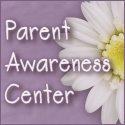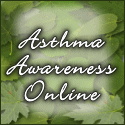
(ARA) - When parents send their children to school, rarely do they think of the many allergy triggers lurking in the classroom or the playground. The culprits include indoor allergens like dust from the chalkboard, mold in the locker room and dander from class pets, as well as outdoor allergens like pollen, which can travel from the recess field to the classroom on clothing and hair.
Many kids have trouble concentrating on schoolwork because they are distracted by their allergy symptoms. In fact, according to the American Academy of Allergy, Asthma and Immunology, up to 40 percent of American children have allergies.
“Kids miss about two million school days a year due to bothersome symptoms like itchy, watery eyes, sneezing and a runny nose,” says Dr. Paul Ehrlich, pediatric allergist and associate chief of the Division of Allergy and Immunology of Beth Israel Medical Center in New York City. “They can get frustrated when allergy symptoms interrupt their day and prevent them from doing the same things their friends do.”
It’s a good idea to have a plan in place to treat your child’s allergies before they leave home. Dr. Ehrlich explains that choosing the right allergy medication is key to making sure your child stays focused while at school.
“Some allergy medicines can make children drowsy or jittery,” he says. “I suggest using Children’s Claritin since one dose lasts the entire day without making kids feel jittery or drowsy. It’s safe for kids as young as two, and it’s available in several forms including easy-to-take grape chewables and a grape syrup.”
So what else can you do to relieve your child’s allergy symptoms and prevent them from flaring up during the school day? Dr. Ehrlich offers the following tips:
* Identify the specific allergens that trigger your child’s symptoms so he or she will be able to avoid contact with them.
* Tell your child’s teachers, school nurse, coaches and caretakers about his or her allergies, triggers and medications.
* If your child is seated near classroom pets or plants, ask the teacher to change his or her seat.
* Remind your child to wash his or her hands frequently to avoid spreading allergy -- causing dust, pollen, pet dander or other substances.
* Before your child leaves for school, treat allergy symptoms with a non-sedating antihistamine, such as Children’s Claritin, that will last through the school day without making him or her drowsy. That way your kid can enjoy recess and all the other activities throughout the day.
Speaking of school, allergy education goes right alongside treatment of those pesky symptoms. Kids are inquisitive by nature, and it’s important to help them understand the causes of their symptoms so they can concentrate on their schoolwork, not their allergies.
“Casey and the School Day Sneezes” is an educational story designed to help kids understand the indoor and outdoor allergy triggers they may encounter during the school day, while providing tips on how to manage them. Parents and teachers can visit www.claritin.com to order a free copy.
Courtesy of ARAcontent





